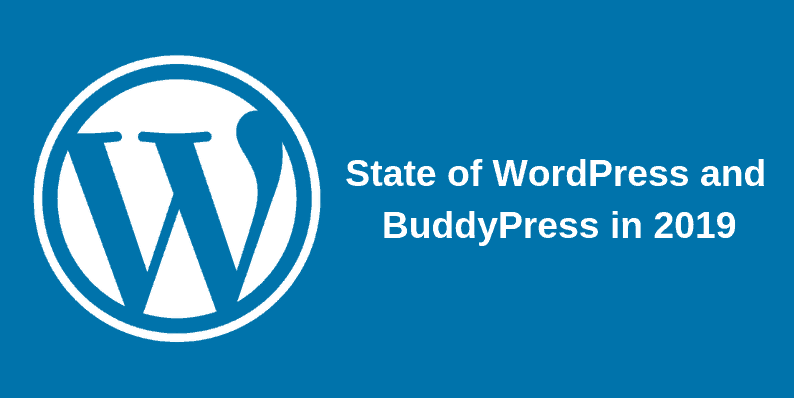State of WordPress and BuddyPress in 2019
WordPress has been on the market for more than 15 years, and this is the time of the year where we look back at what happens in 2018, who was making the show, and what can we expect.
Without further ado, let’s talk about some WordPress statistics.
WordPress Statistics In 2019
WordPress is the most popular Content Management System (CMS), with mind-boggling figures. When we know that it amounts for more than 30% of all the websites on the internet, while there are 20+ alternatives, we can’t help but think that this is impressive.
Let’s cover some of the most important facts:
- WordPress is behind 14.7% of the top 100 websites.
- There are 50,000+ plugins available on WordPress.org.
- But also, very sadly, WordPress is the most hacked CMS.
- There are 56 official translations of WordPress, making it a very flexible solution to build multi-language websites.
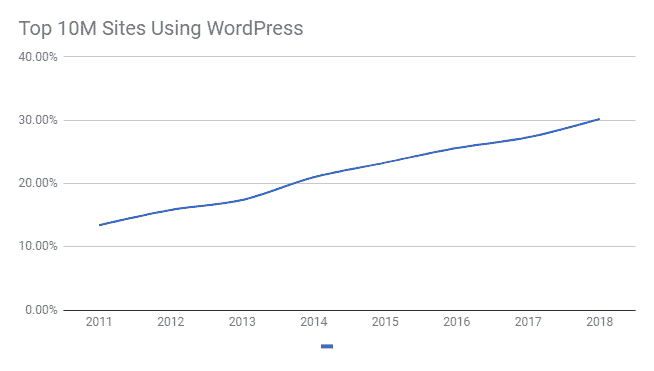
Percentage of the top 10M sites using WordPress.
For more advanced statistics, you can check out this extensive list from CodeInWP.
You can find a wrap-up of the best themes of 2018 in this article.
We have covered the statistics.
Great.
But what happened in 2018?
Gutenberg and WordPress 5.0
The year 2018 saw the release in a stable version of the new much-anticipated WordPress editor: Gutenberg.
Gutenberg was officially released with WordPress 5.0 in December.
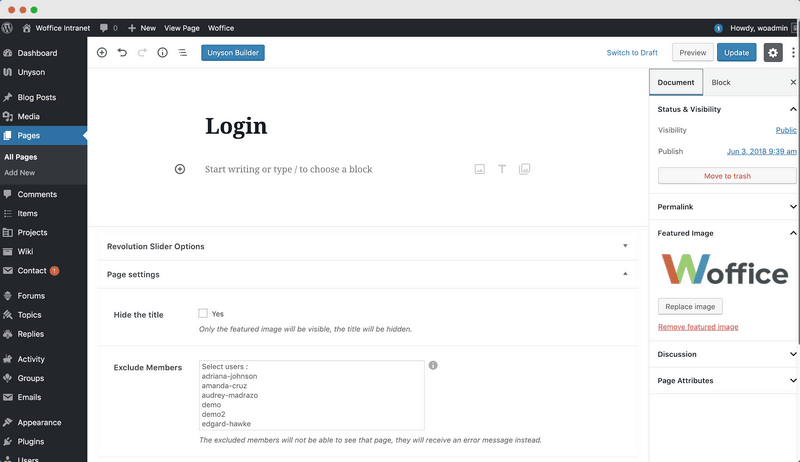
Gutenberg is all about offering a better User Experience, all about making the writing experience 10X better than what it was before.
“The entire editing experience has been rebuilt for media-rich pages and posts. Experience the flexibility that blocks will bring, whether you are building your first site, or write code for a living.” (WordPress.org)
Its goal is also to reduce the number of plugins websites rely on, creating a consistent experience across every WordPress website.
Gutenberg also introduced the concept of blocks, which make the process of creating, laying out and organizing pages and posts easier.

You can insert and embed anything you can think of in those blocks, from simple paragraphs, to quote, images, Youtube videos, Spotify song, chart, Reddit thread, and much more.
This block-based approach allows for easy drag-and-drop functionalities, as well as a richer experience.
Blocks are open for developers through a Javascript API to build their own custom-blocks for their plugin or theme.
For example, for a WordPress intranet, we could imagine adding the ability to add a new knowledge base block.
As a matter of fact, all the new Gutenberg is powered by React under the hood, and this has been largely debated. Gutenberg’s Javascript API is actually an abstraction layer over React, which means that Block developers (ie. theme and plugin developers) don’t have to learn to React in order to create their own Blocks, although they are better off.
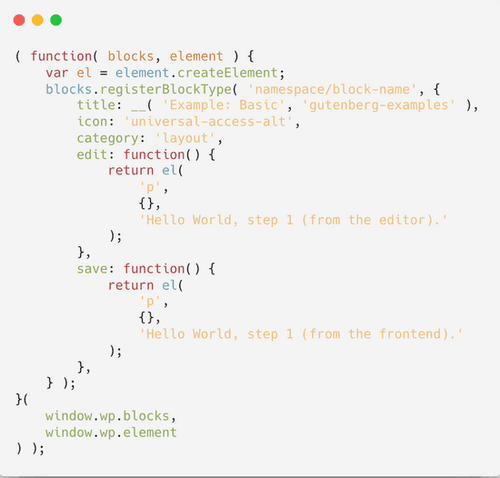
How to create your first Hello-World Block.
TL;DR. They have chosen React over Vue.js for its performance, stability and the ecosystem.
Moving towards Javascript is a way to attract new developers and broaden the horizons, thus growing the ecosystem.
Since the inception of the WordPress, we have mainly seen PHP developers contributing to the ecosystem (creating themes, plugins, etc.), which made sense.
This is going to change.
WordPress Gutenberg is available by default when you install the new version of WordPress.
WPCrafter made a great tutorial video, I couldn’t recommend it more.
BuddyPress Nouveau
2018 has also seen the introduction of BuddyPress 3.0, aka. BuddyPress Nouveau, which marks the tenth anniversary of BuddyPress.
It follows suit and delivers modern markup with Javascript-powered templates, and full integration with the new WordPress.
BuddyPress 3.0 is fully compatible with WordPress Customizer and provides options to manipulate the different templates. For example, you can modify a user’s navigation options from the frontend. Just check out different BuddyPress themes you can get and you’ll get the picture.
And this largely covers the year 2018.
In a nutshell, big user experience improvements and the introduction of Javascript in the core of WordPress.
But, the question remains: what to expect ahead for WordPress?
Future of WordPress Beyond 2019
In order to answer this article and help me shape the answer to the future of WordPress, I asked the folks on IndieHackers what was top of mind for the future of WordPress.
I have summarized the answer below, and group them down into different categories.
Rise of the WordPress Rest API
It’s predictable that we see a rise in the number of applications and websites using WordPress Rest API to power their backend. We are seeing more and more of those leveraging WordPress’s powerful page and content editor, with a different front-end solution (eg. mobile application, Javascript application).
This opens up the possibility for a whole new community of users, which could have never used WordPress before.
The main challenge thus remains the move away from PHP and towards Javascript.
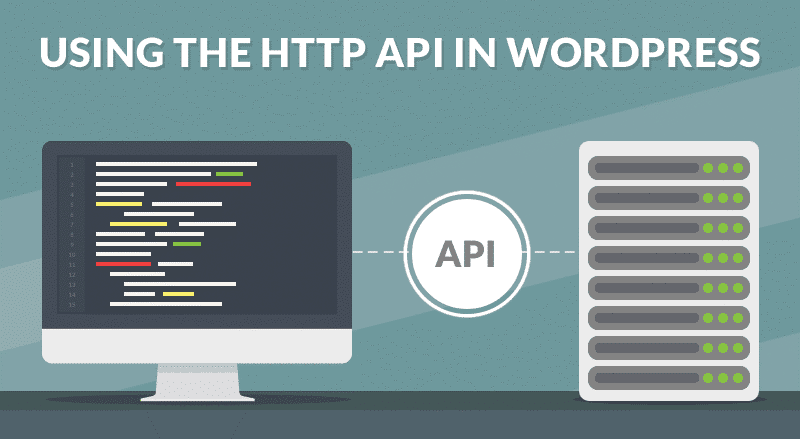
After Zapier, Things Get Real
Zapier and similar middleware have led to a lot of integration options. But after this explosion, we want more, there are a lot of “shallow” integrations.
WordPress is one of the most flexible CMS. Plugins and custom webhook/API driven integrations are here to stay.
For instance, As Axel from Sendinblue describes: in email marketing for WordPress you probably want to use a specific Email Service Provider. But not all integrations are made equal. You want an actively developed, encompassing tool that is able to track web visits and trigger based on site behavior. WordPress doesn’t have that natively, so it’s up to you to add the right tools in your stack.
E-commerce, AI and eprivacy
There is a strong link between WordPress, e-commerce and lead generation. The open source ecommerce platform Magento bought by Adobe, people might think twice about WordPress and for instance WooCommerce as their e-commerce platform of choice.

Image source: Future of email marketing.
Driving traffic to your shop is a not a new challenge, but GDPR and privacy laws have put a lid on outrageous external targeting. And Europe is up for a new ePrivacy law in 2019, with changes to cookie law. See the parallels with the future of email marketing.
We expect the growth to come from new AI-driven recommendation software and secure data handling.
Double-Down On Security
On 25 May 2018, the European Parliament made it a compulsory norm for every business to have a General Data Protection Regulation (GDPR) compliant website.
If you own a website and want to do business in EU countries. You need to make your website GDPR compliant by asking for user consent before collecting, storing and using that data for business purposes.
This lead to the introduction of WordPress GDPR settings and guidance for the end-user. The plugin and theme authors did the same and updated their packages to be GDPR-compliant.
This means that we can confidently assert that all WordPress websites will be GDPR compliant in 2019. We can also expect the WordPress team to introduce further features to push the website to be safer.
Besides this, we’ll continue to expect more WordPress plugins to follow the regulation to ensure safer and more secure WordPress websites.
Move Towards Enterprise Solutions
As Noel Tock stated in his WordCamp Europe presentation, we can expect an increase in the number of enterprise solutions. In other words, we are likely to see a decrease in the number of small websites powered by WordPress — choosing quicker alternatives such as landing page builder. But an increase in the number of more complex solutions for big names such as Wired, TechCrunch, or Mashable.
This entails that WooCommerce will follow suit and be maintained to support heavier use-cases.
We can also expect more landing-page builders and website builder based on WordPress and leveraging Gutenberg to come out in 2019.
“While some people think that Gutenberg is not a right movement by WordPress team, but I think they had to. They won’t be able to dominate the market with a text editor, they really needed to create a visual page builder even sooner than 2019.
I agree that Gutenberg was not (and is not) ready for the mass market, but they have a great foundation for future development. I’ve been developing a landing page builder on top of Gutenberg (TheSaaS X) in the past couple months, and really like the structure and components of Gutenberg. I guess phase 2 of Gutenberg would attract more users to start using it.” — @hosshams on IndieHackers
To conclude, WordPress dominance of the web is not going away anytime soon. But buckle up for some changes in the community and the overall environment.
Will we see the introduction of a new WordPress based on Node.Js…
I don’t think so… To be continued…
- State of WordPress and BuddyPress in 2019 - February 5, 2019
Where Should We Send
Your WordPress Deals & Discounts?
Subscribe to Our Newsletter and Get Your First Deal Delivered Instant to Your Email Inbox.
